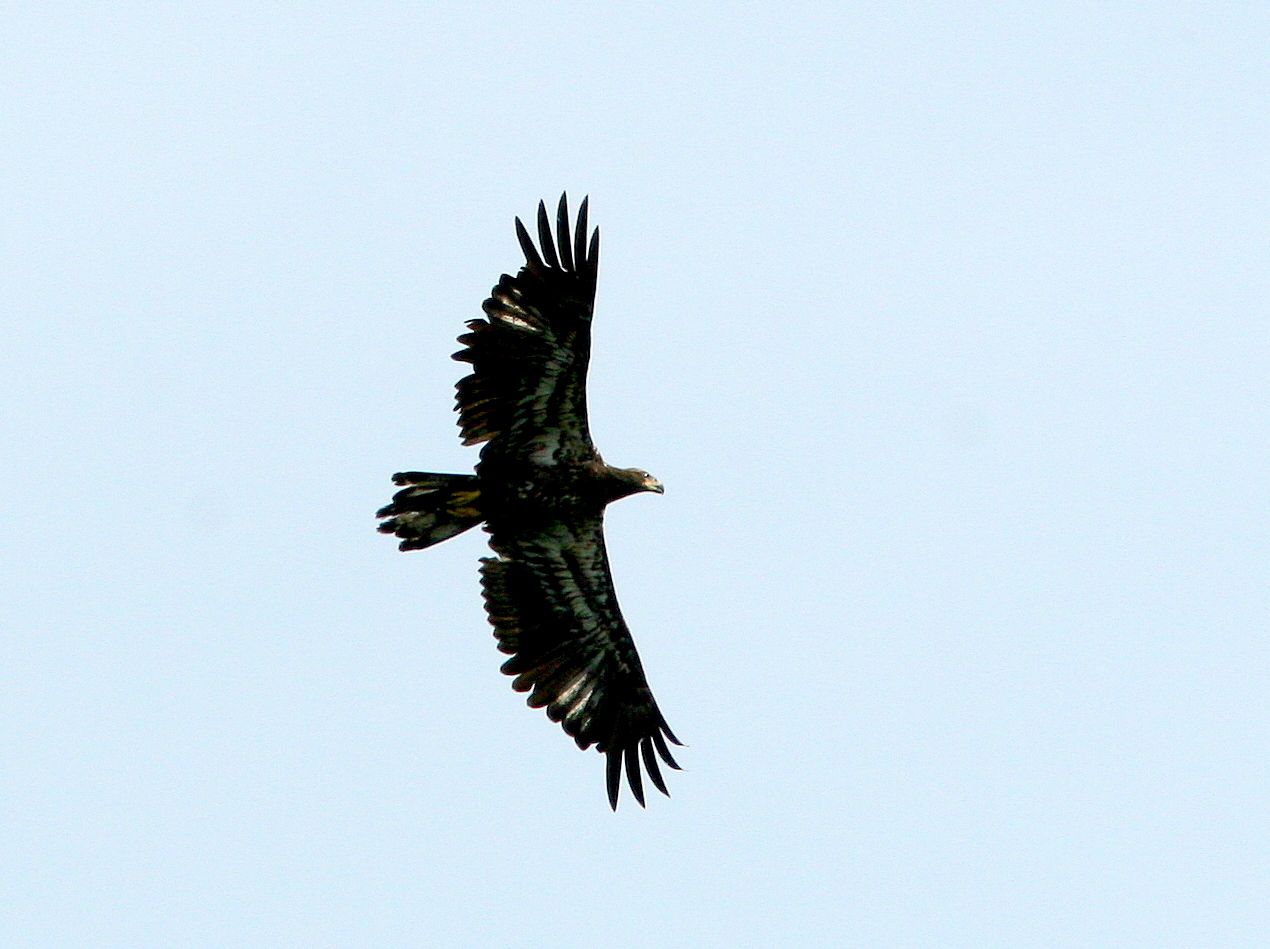Here is an example of a second-year Bald Eagle, molting heavily. Its long and worn juvenile wing and tail feathers are being replaced by new and shorter adult ones. Note that the wing molt begins with the primary feathers (the 10 that make up the wingtip or "hand") nearest the body and works its way out to the wingtips in a symmetrical pattern to keep the wing balanced.This bird appears to have three new primary feathers on each wing-- they are rounded and have more white on them. It has more white on the wings, tail and belly than a fledgling. I took this in Illinois in 2009.

Contrast the above "ragged" appearance with the fresh new feathers of a juvenile (first year). This is Hope on one of her first flights in 2009. Note that both birds have white "armpits."
